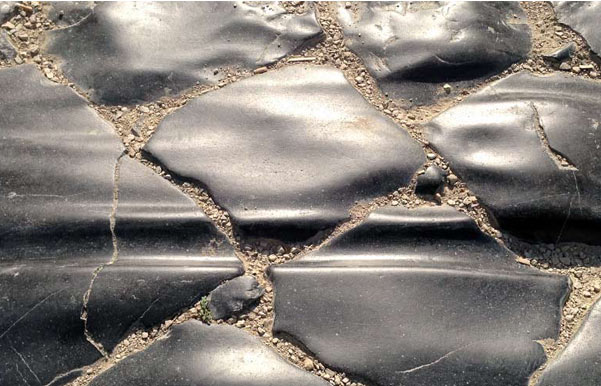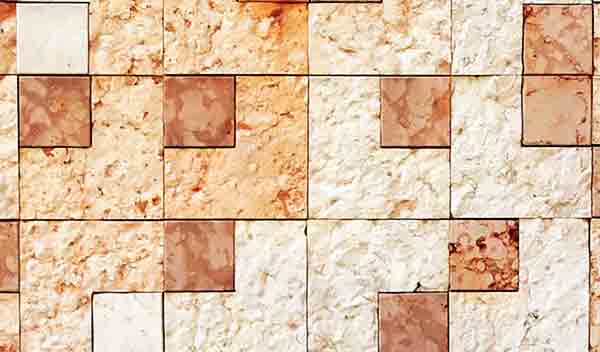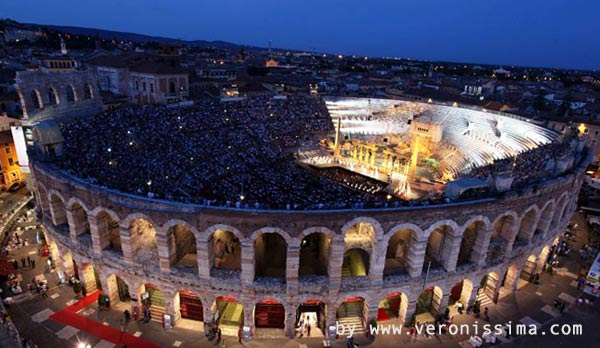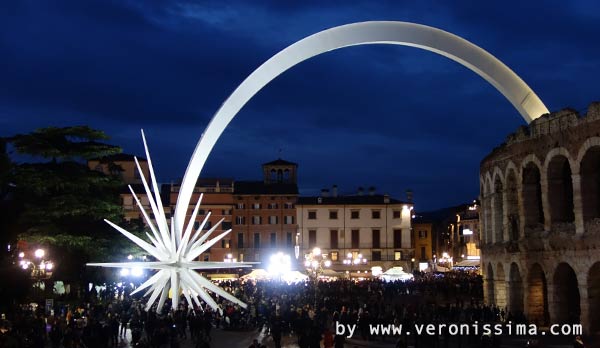The Arena
The Arena is the Roman amphitheater in Verona. It was built in the first century AD to watch the fights of gladiators. It is the third Roman amphitheater for size among those still existing and is used in summer for opera, concerts and events. It is the monument that most represents the city.
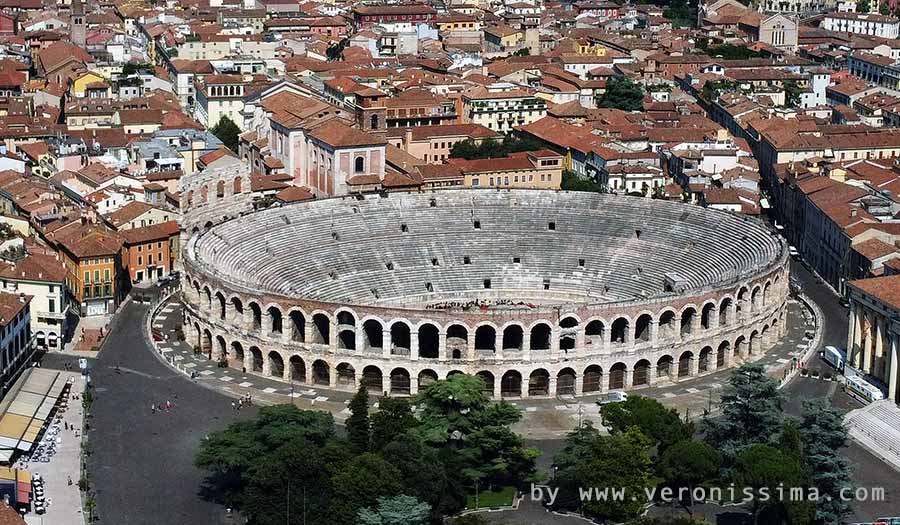
Info & Bookings:
+39 333 2199 645 info@veronissima.com P.I. 03616420232 C.F. CPPMHL74L13L781C
Verona is often referred to as "little Rome" for the abundance and state of preservation of its artifacts. As such it also has its own "little Colosseum", namely the Arena. Compared to the Flavian Amphitheater in Rome, the Arena of Verona is less than half the size, but in the course of its long life has continued and continues to be used for shows of all kinds, especially musical ones.
L'Arena at a glance
| Anno di costruzione | 40-42 d.C. | |
| Forma | Ellittica | |
| Lunghezza asse maggiore | 152 m | |
| Lunghezza asse minore | 123 m | |
| Dimensioni arena (area centrale) | 75 x 44 m | |
| Altezza | 30 m all'ala (i quattro archi conservati del muro più esterno), 25 m il corpo centrale. | |
| Numero gradini | 44 | |
| Numero archi | 72 | |
| Posti a sedere | Originally 30,000. Today about 20,000 total. During performances, seating ranges from 13,000 to 15,000 depending on stage setup (the bleachers behind the stage are not used). |
The History of Verona
Verona, from its foundation in the first century B.C., became a wealthy and populous city, thanks to its strategic position at the center of the most important communication routes in northern Italy. of the most important communication routes of northern Italy. Over the course of a century, it was endowed with great monumental buildings: public palaces, temples and places of entertainment.
Gladiators Verona
In the meantime, in all the territories dominated by Rome, gladiatorial fights had spread. The bloody fights had originated in Etruria or Campania, perhaps as a funerary ritual, and in a short time had been transformed into a pure form of entertainment, beloved by spectators. The political class used gladiators, venationes, naumachie to obtain consensus and placate social dissent. Emperors and local magistrates competed to see who could offer the most elaborate and grandiose spectacles.
If you want to know more
The Amphitheater
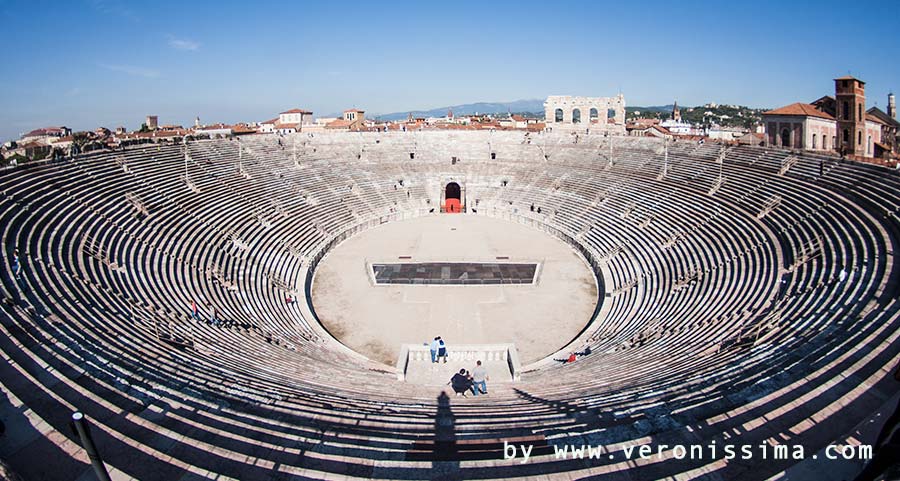
In order to accommodate the crowds that flocked to watch the gladiatorial fights, a special building was elaborated: the amphitheater. The Roman architects had doubled the Greek theater, placing one in front of the other united for the stage to form an elliptical structure. The action took place in the center, the audience sat all around on the concentric bleachers.
In short the amphitheater became one of the indispensable buildings in every city of the Empire and, together with the gladiatorial fights that took place there, one of the representative features of Roman culture.
Archaeologists estimate that about 200 were built. Many are still well preserved, such as the arenas of Nimes, Arles, Pula, Pompeii, Capua and of course the Colosseum in Rome and the Arena in Verona.
The Construction
Like their descendant stadiums, amphitheaters were crowded and noisy places. The audience supported their favorites with shouts and ovations. Fights over a seat or a disagreement over a refereeing decision were commonplace.
In addition, the presence of wild animals, the abundant bloodshed and the consequent accumulation of carcasses and corpses made the amphitheaters places shrouded in a nauseating odor. For this reason they were usually built far from residential areas.
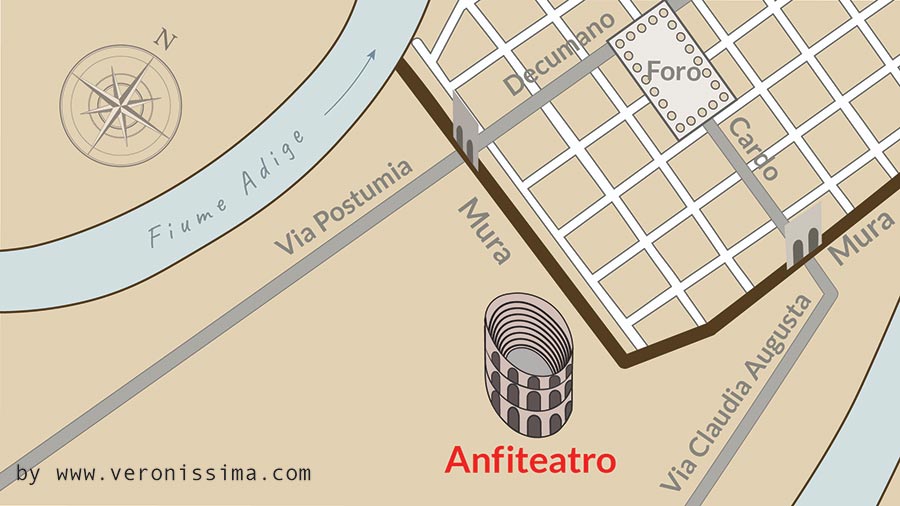
In Verona the Arena was built outside the town, 60-70 meters south of the walls that closed the bend of the Adige, at equal distance from Porta Borsari and Porta Leoni, the two main entrances to the city. In this way it was also easy access for those coming from the lake of Garda, from the Valpolicella or from one of the many settlements that rose around Verona.
Seeing in the distance this gigantic building rising from the plain in front of the city walls must have offered a truly impressive sight.
Verona Stones
Such imposing buildings required immense amounts of building material. Roman architects and engineers were very practical and flexible in adapting their designs to the lay of the land and to the materials available locally.
The amphitheater in Verona was built using stone from the Valpolicella valley, the so-called Rosso Verona. The amphitheater was chosen for the Valpolicella.
For the amphitheater of Verona, stone from Valpolicella, the so-called Rosso Verona, was chosen. This is the limestone of which the Lessini mountains, the mountain range north of the city, are composed. It is an excellent building material, compact, resistant and easy to extract. It has been known since ancient times and continues to be used today for its qualities, including its color, which, depending on the quarry, ranges from milky white to deep red.
The Roman extraction areas were mainly located in the upper Negrar valley and in Sant'Ambrogio, about 20 kilometers from the city.
If you want to know more
Recent Discoveries
In 2013, during the works of arrangement of the electrical system of the Arena were found some finds. Thus began an archaeological excavation under some arches that reached very deep.
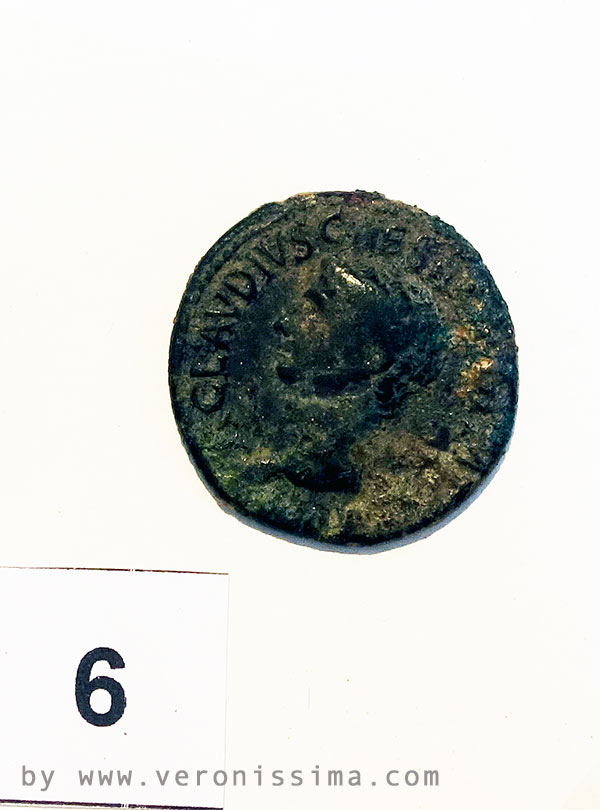
A coin was found that ended up there who knows how and why just as the foundations of the amphitheater were being laid. Going back to when it was minted and put into circulation it was easy to give a precise date of the beginning of the works.
It is a very narrow time window that goes from 40 to 42 AD, at the time of Emperor Claudius.
We do not know how long it took to complete it, but usually Roman engineers, with standardized projects, a precise organization of work and use of large human and material resources, were quick.
The Arena of Verona is therefore older than the Colosseum, which dates back to 80 AD.
Gladiators' School
A previous archaeological excavation had brought to light the remains of a large building constructed next to the Arena, where today stands the town hall of Verona. According to scholars, it could have been the school of the gladiators, the place where the protagonists of the shows trained and lived as semi-retired.
The Arena must have had a very active show program, especially in the first centuries after construction.
Gallienus Walls
In 265 A.D. the Alemanni, a barbarian population settled in the southwest of present-day Germany, crossed the borders of the empire with warlike intentions. Verona was right on the line of their advance. But almost three centuries of peace had rendered its walls useless. In just six months, Emperor Gallienus managed to restore the city's defenses.
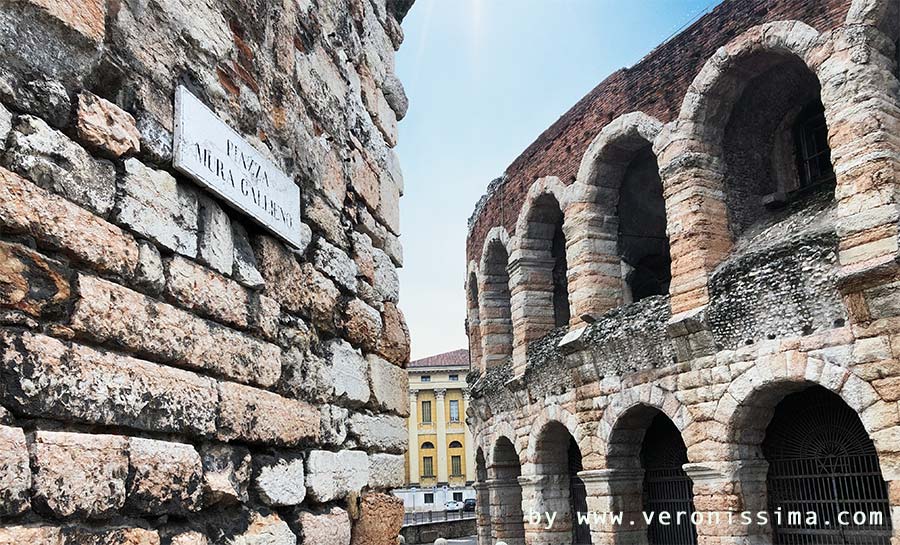
A portion of Gallienus wall behind the Arena.
On this occasion the Arena, which until then had remained outside, was also incorporated. The reason was not so much the desire to preserve the monument, which was certainly not of great interest to the barbarians. The Arena, with its 30 meters high, built close to the city, overhung the defensive walls by almost 20 meters. The enemies could have occupied it as a stronghold and used it to control what was going on inside Verona and as an elevated point of attack.
It is probable that on this occasion the dismantling of part of the outermost wall of the amphitheatre began, either to lower it or to use its stone blocks in the restoration of the city walls. The discovery of a keystone with an engraved number of one of the entrances of the Arena incorporated in the wall of Gallieno would seem to confirm this hypothesis.
Middle Ages
In 404 AD, Emperor Honorius formally banned gladiatorial combat. It is probable that from much earlier, no more shows of this type took place in the Arena. The decline of the empire and the spread of Christianity had radically changed the grandiose but often cruel culture that had led to its construction and use.
The building was definitively incorporated into the new walls that Theodoric, king of the Goths, built in Verona.
The Iconografia Rateriana is a detailed map of Verona made by Bishop Raterio in the 10th century. The Arena, called theatrum still appears surrounded by the defensive wall.
It is probably from this period that many of the archways were used as stores, workshops and even dwellings. The unusual use of the monument will last until the 1800s.
In 1117, a tremendous earthquake destroyed what remained of the Arena's outer wall. By a miracle, only a section of four arches was saved. This is the Arena Wing, its principal identifying feature.
During the Scaligera era, the Arena was used as a prison, a place for duels and for large public festivals.
Renaissance
Demolitions, earthquakes, neglect, and the most disparate uses had left the Arena in a pitiful state when in 1500 it was decided to restore it. The city was part of the Venetian Republic and the Venetian administration took care of the work. We are in the middle of the Renaissance and the rediscovery of the ancient. A monument like the Arena was undoubtedly a source of pride and prestige. A large part of the ruined steps were replaced and the missing ones were integrated. The external arches were also restored. It is thanks to this restoration that we can still admire and use the Arena today. Following the restoration, the amphitheater began to be used for theatrical performances.
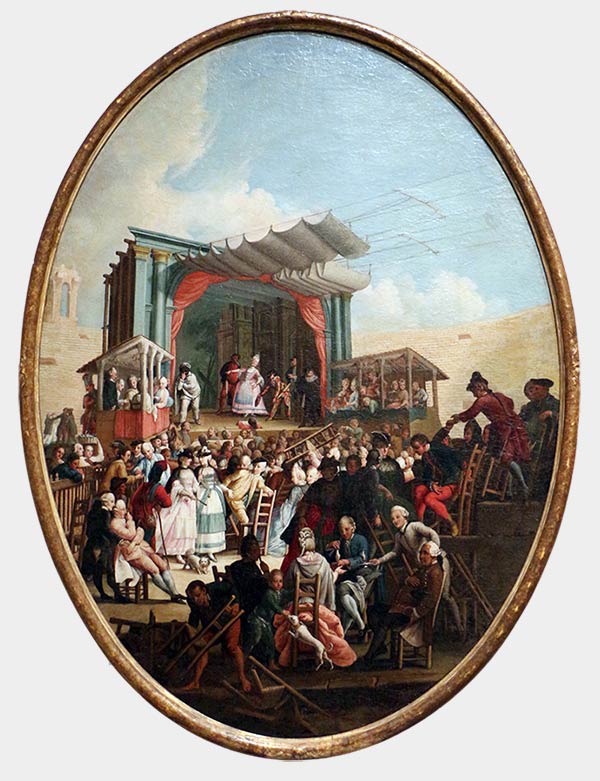
This eighteenth-century painting by the Veronese painter Marco Marcola shows a representation of the Commedia dell'Arte in the Arena. A small wooden stage was set up inside the amphitheater. The audience would bring their own chairs from home and settle on the steps and in the stalls.
In the background you can see the steps of the cavea and the wing.
THe '700s and the 'Hunt'
In the 18th century, the Arena was used to watch hunting. It was a kind of bullfighting in which a bull fought against mastiff dogs. Napoleon also attended when he came to Verona in 1798 following the defeat of the Republic of Venice. A model of the Arena, perfect in every detail, hidden inside an opening table and made during this period, shows the setting up of Verona's amphitheater for hunting. It is preserved at the Archaeological Museum of Verona and also depicts the many stores that still occupied some of the archways.
The Opera
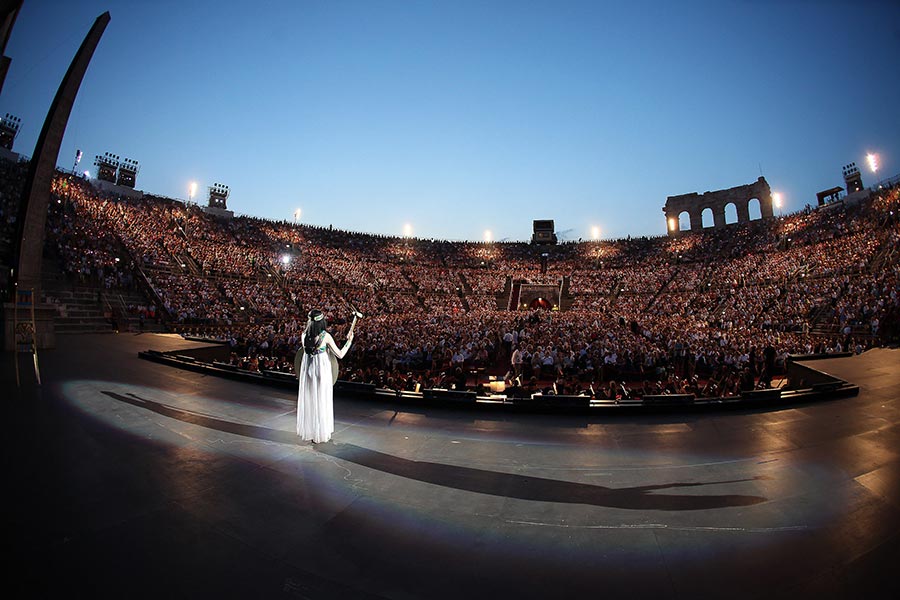
In 1913, the first opera performance was held in the Arena. Legend has it that tenor Giovanni Zenatello was visiting the Arena with friends when they asked him to sing a few arias. They immediately realized how good the acoustics were in this ancient venue, and the idea of holding an opera there was born. In reality, the Arena had already been used for some years for shows and musical concerts.
For the realization of an entire opera, Verdi's Aida was chosen, which with its spectacular scenery lent itself to the monumentality of the place. It was a great success and it was therefore decided to make it an annual event that has become an important international festival. If we exclude the years of the two world wars, it has continued uninterruptedly since then. Famous artists such as Maria Callas, Pavarotti, Placido Domingo have sung there.
The Arena Today
Over the past forty years, the Arena has been used for events and shows on an increasing scale. In addition to the opera, there have been rock, pop, and jazz concerts, a number of sporting events such as the arrival of the Giro d'Italia, the International Crib Festival that has long been held here, and even gala dinners and ice skating shows. Some of these shows are not infrequently broadcast on national TV.
The building is constantly monitored and the subject of restoration and archaeological research.
In Roman times the show took place in the center with the audience arranged all around. Today the Arena is used as a theater. A stage is erected on one side and scenery is set up while the audience sits in a semicircle on the opposite side. A portion of the arena (fighting area) is used as an auditorium. This use reduces the capacity of the amphitheater (the bleachers behind the stage are not used). Depending on the size of the set-up, it ranges from 15,000 to 17,000 spectators.
If you want to know more
The Structure
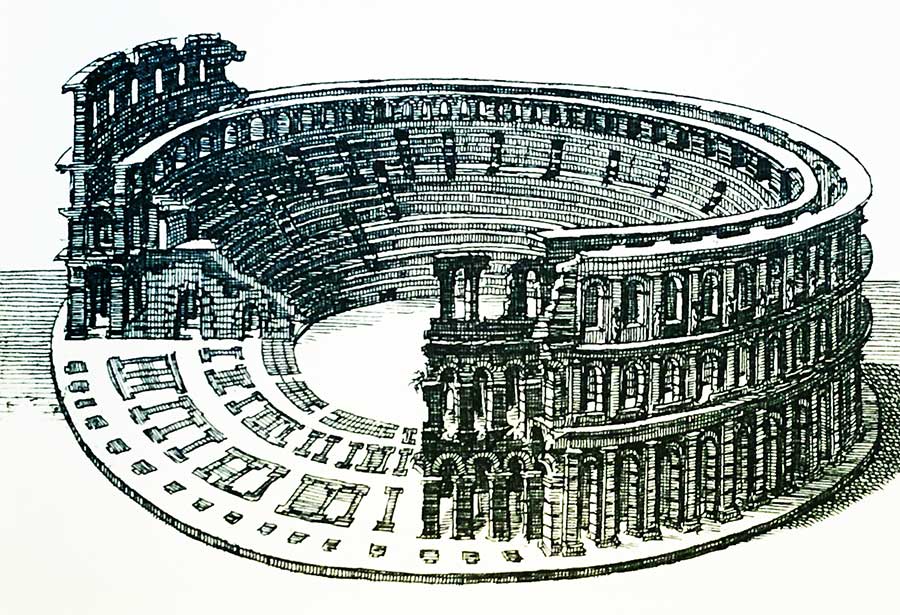
The Arena of Verona has an elliptical plan. The major axis is 152 m long, the minor axis is 123 m long. The inner space used for the shows, i.e. the arena itself, measures 75x44 m.
The skeleton of the Arena consists of three concentric galleries and the walls and vaults that make it up. The outermost gallery is surmounted by a second floor consisting of a second gallery with its walls and vaults. The result is a structure sloping towards the center.
Aches
In the construction of the amphitheater, the architects and engineers of antiquity made extensive use of the arch and the vault, characteristic elements of Roman architecture. The walls of the structure are made up of a series of arches that, connected to the cavea (steps) by flights of stairs, also serve as entrances.
The arch, compared to the solid wall, has several advantages:
- provides considerable strength (the weight above it is distributed evenly over the pillars and strengthens the structure).
- It saves material (the arch inside is empty).
- It makes construction faster (ribs, wooden scaffolding, were used to make it and could be reused in series as work progressed).
Externally, the amphitheater of Verona consisted of three orders of overlapping arches. The height of the arches decreases as you go up. The lower order has a height of 7 meters, the middle one 6 meters and the upper one 4.5 meters. These proportions gave greater momentum to the overall view of the monument.
Cavea
On the framework of the arches and vaults were placed the blocks of stone that formed the steps called as in Greek theaters: cavea.
The cavea of the Arena of Verona consists of 44 steps. In the highest part, where the outermost wall was connected to the central body, there must have been a porch, now completely lost, where one could watch the shows standing up.
The cavea was divided into sections both to facilitate the entry and exit of spectators, and to divide them according to social classes. Although shows in Roman times were free, seats were assigned according to class: the patriots closest to the show, plebeians farthest away, slaves and foreigners standing in the portico highest.
The steps of the cavea were comfortable to sit on but very high and uncomfortable to climb. To facilitate moving up or down, the sectors were bounded by smaller steps.
Vomitoria
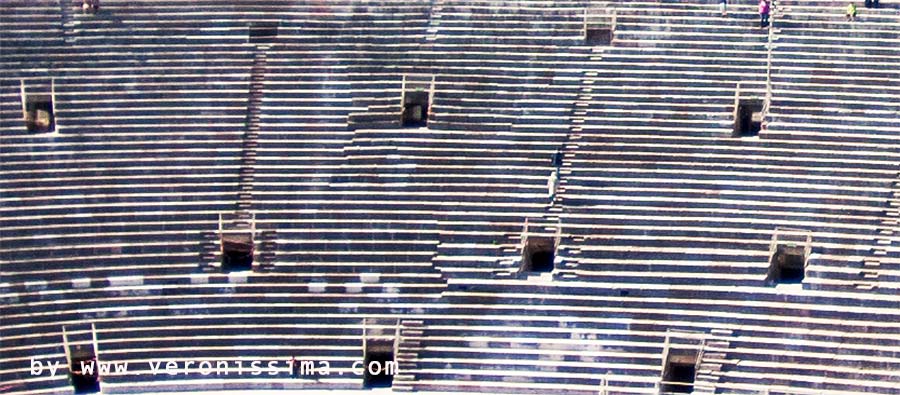
Each outer archway was numbered and constituted an entrance to the amphitheater. Ramps of stairs led to a corresponding sector within the cavea ending in a vomitorium. The vomitorium were the square openings that opened into the cavea. This bizarre name derives from the fact that the crowd that came out of them rushing to grab the best seats had to give the impression of being literally vomited out.
Arena
Arena is actually only the name of a part of the amphitheater, although the most important, the "ring" where the fight took place. In Latin "arena" means sand and in fact the gladiators faced each other resting their feet on a substrate formed of this material. The sand has the characteristic of absorbing liquids, blood and animal excrement in this case, and to be easily replaced by cleaning up quickly the fighting space between a meeting and another.
The arena was separated from the bleachers by a wall about 1.70 high called podium. It is likely that there was an additional fence above this to prevent rampaging animals from reaching the spectators in the front rows.
Gladiators, venators, orderlies and attendants entered the arena through two monumental arches placed at the ends of the longest axis of the ellipse.
Underground Galleries
As in the Colosseum, there were also underground rooms under the Arena of Verona, although simpler than in the Flavian amphitheater. They are two corridors located under the axes of the ellipse. It is not clear what their function was and there is disagreement between historians and archaeologists. According to some they could be used for spectacular entrances of gladiators and animals through trapdoors. According to others, they were just service rooms used to store props or to drain the monument. At the moment they are not accessible by visitors.
Exterior and "the Wing"
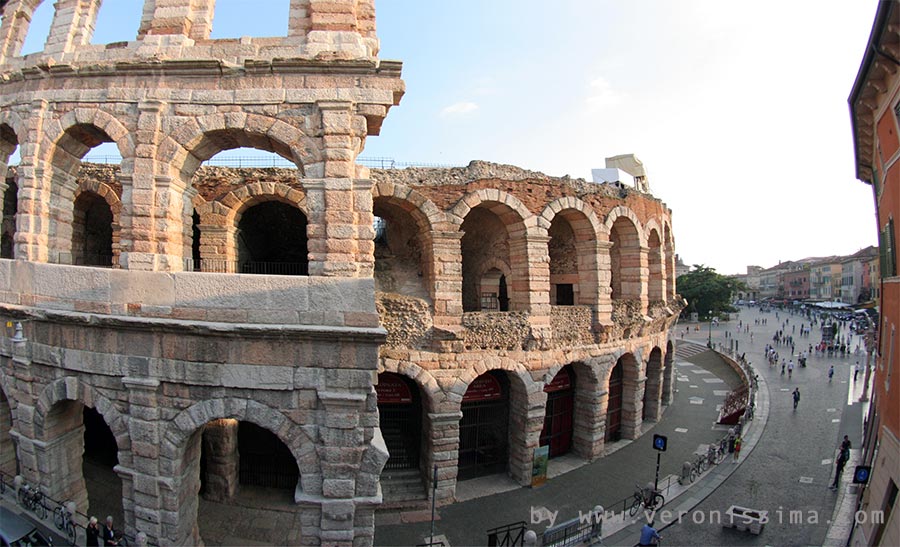
The outermost ring of the amphitheater of Verona was almost completely destroyed in the earthquake of 1117. Only a section of four arches called the "wing" remains. It was entirely made of stone in a simple rusticated Tuscan style. Some of the arches must have been decorated with statues. During archaeological excavations near the Arena, pieces of sculptures depicting the head with helmet of a gladiator and the fist of a boxer were found. They are now on display at the Archaeological Museum of the Roman Theatre.
The outer wall had not only a decorative function. Connected to it was the vault that supported the portico at the top of the cavea and the complex system of ropes and pulleys used to hoist the velarium.
Ther Velarium
It was the curtain that covered the spectators. In Roman times there was no electric lighting. The shows took place during the day and could last from dawn to dusk. For those who sat and watched the games for the entire day, the direct sun was unbearable, especially in the summer season when most of the fighting took place. A cover to shade the audience was indispensable. Considering the extension of thousands of square meters, however thin, the cloth must have had an immense weight. How it could be supported remains a mystery. The velarium, made of segments similar to sails (hence the name), could be opened and closed by sectors and was maneuvered by sailors of the Roman fleet.
The Legend
The Arena of Verona has remained visible from the time of its construction to the present day and is still the largest building in the city. If we too, with our knowledge and technology, are amazed at such a marvel of the past, the disbelief of the people of the Middle Ages must have been even greater.
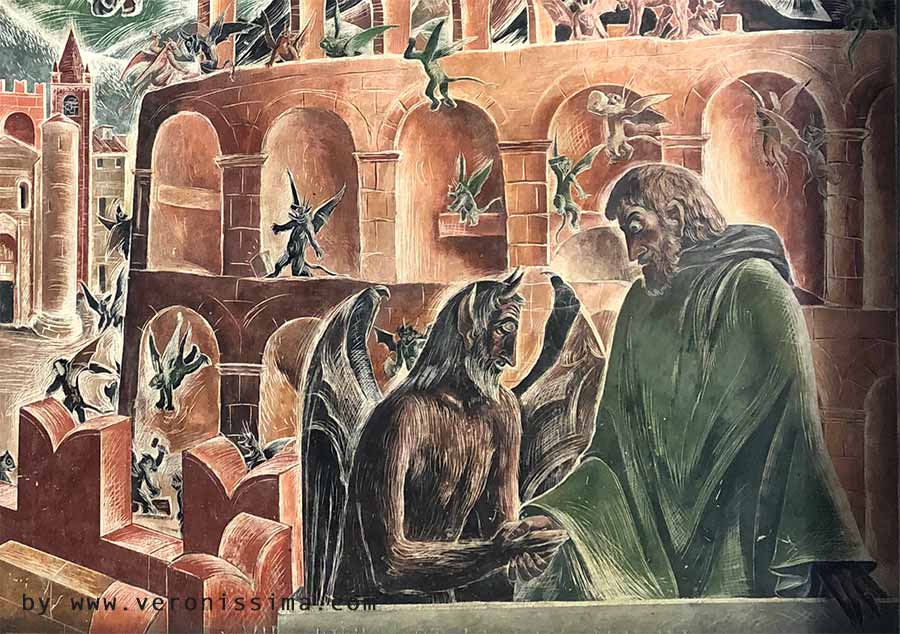
Detail of the fresco by the Veronese painter Pino Casarini depicting the legend of the demonic pact related to the construction of the Arena..
To explain how it was possible to realize it, numerous legends were born. The most famous one is that of the pact with the devil. It tells of a man in prison the night before his death sentence for a bloody crime. In order to save himself, the condemned man is willing to make a pact with the devil. The devil appears to him and suggests a plan.
The man asks to speak with the governor of the city. In exchange for a pardon, in one night only, he will build the largest and most magnificent building in the city where the people of Verona will be able to attend games and shows. Incredulous, the governor accepts and as soon as night falls, all the devils of hell are put to work to build a giant amphitheater. As the hours go by, the man realizes how senseless is the agreement he has made with the devil. In order to have a few more years of life he has condemned his immortal soul to eternity. He then turns to the Virgin Mary, begging her to dissolve the wicked agreement. Our Lady listens to his repentance and anticipates the sunrise by a few hours. The rooster crows and the workers begin to leave their homes to go to the fields and stores. The devils who had calculated the time of work to complete the work undisturbed hidden by the darkness of the night must vanish leaving the amphitheater unfinished. The presence of the wing of the Arena was thus explained.
Guided Tours
The Arena is the most important monument in Verona. Even just a quick explanation from the outside is always included in all our guided tours.
The monument is open to the public (closed Monday morning) for a fee. Visits more focused on the Roman era can include a visit to the interior.
We can also organize more specific visits inside the amphitheater with workshops and educational activities for students of all levels.
Further information on the Arena and guided tours of Verona:
+39 333 2199 645 info@veronissima.com P.I. 03616420232 C.F. CPPMHL74L13L781C

 IT
IT 日本
日本 DE
DE FR
FR 中文
中文 ES
ES